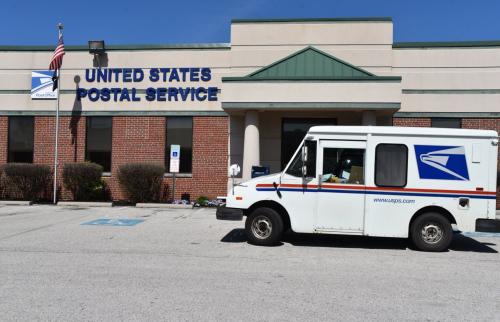If life depends on water, then modern life depends on high quality water and sewer services to keep water-borne pandemics at bay. As the world’s population continues to grow and urbanize, advanced water treatment and sanitation will be ever more essential. We must get the water equation right if we have any hope of sustaining the world’s growing populations and urbanization.
But our water infrastructure doesn’t just need funding, it needs reinvention.
In the U.S., it is no secret that our water infrastructure is struggling to keep up with current demands, much less meet tomorrow’s needs. From pumps to pipes, this infrastructure is often out of sight and out of mind. When failure happens, it can happen in a big way. When a water “main” breaks, the public is on the hook for both the disruption and the repair. As a spectacular illustration of what happens when water mains wear thin, in May 2014 Milwaukee experienced 82 water main breaks in just five days, leaving thousands of people scrambling for water. Other challenges include lead service lines, over-burdened combined sewer systems, and inflow of groundwater into crumbling infrastructure just to name a few. Together, this comes to a $655 billion-plus bill that now faces the country.
Many of us know we need to repair, replace, and extend our water infrastructure, and that we need more money to do it, especially at a state and local level. But it’s not just a matter of finding the money. We also need to think strategically about what we put the money toward. It is time we target those investments for needs today and tomorrow.
The easy course would be to repair, rebuild, and extend our water infrastructure using the technologies in use today. Engineers know how to design and build it, vendors can make money selling components they’re comfortable making, and operators know how to run it. But will it equip us to handle the water needs that communities will face twenty years from now, fifty years from now?
Unfortunately, the answer is “no”.
Our water infrastructure, so essential for modern life, requires reinvention and unswerving attention, rather than just funding.
Our current water infrastructure was assembled when few people were thinking about climate change or the ramifications of reliance on fossil fuels. It was assumed that we could build our way out of any water shortage by moving water to wherever the people were without thinking about ecosystem impact, long-term depletion of aquifers, or the energy costs necessitated by what we now call “traditional infrastructure”. Moving and treating our water often became the largest municipal energy cost, a legacy we’ve passed down to today’s water infrastructure. Coastal communities developed with an assumption that groundwater would always be plentiful, not anticipating that at some point salt water would migrate into the public supplies. And water infrastructure was designed with the assumption that there would always be sufficient customer demand, volumetric flow and rate revenue to sustain operations.
But times have changed.
We are at an inflection point with water infrastructure. We can choose to stay the course, rebuild and repair using tried-and-true designs that have been with us for decades, designs that will magnify today’s challenges. Or we can rethink how we’ll invest our trillion-dollar water opportunity to ensure safe, sufficient, affordable, and resilient water and sanitation services.
Fortunately, we’re not starting from scratch. Leading utilities like the East Bay Municipal Utility District in Oakland, Calif. have broken the mold showing that it’s possible to become a net generator of energy and source of clean, reusable water. Even smaller cities like Stevens Point, Wisc. are well on their way toward weaning off outside sources of energy while also creating high quality biosolids that provide sustainable nutrients for nearby farmers. New York’s Battery Park City innovations have demonstrated that smaller-scale, distributed water treatment can play a critical role in urban resilience. Cities throughout the country are increasingly turning to green infrastructure to solve water problems while also creating vibrant neighborhoods.
We have an opportunity in Congress, and in every community across the continent, to not just rebuild our water infrastructure but to re-imagine it with an eye toward a new generation of challenges. Whether through efforts like Water Week or planning for changes back home, we need to ensure that infrastructure investments are strategically aimed to build water systems that recognize the changing nature of weather patterns and limitations of our natural resources.
The Brookings Institution is committed to quality, independence, and impact.
We are supported by a diverse array of funders. In line with our values and policies, each Brookings publication represents the sole views of its author(s).



Commentary
Water infrastructure: Today’s funding for tomorrow’s needs
April 18, 2018